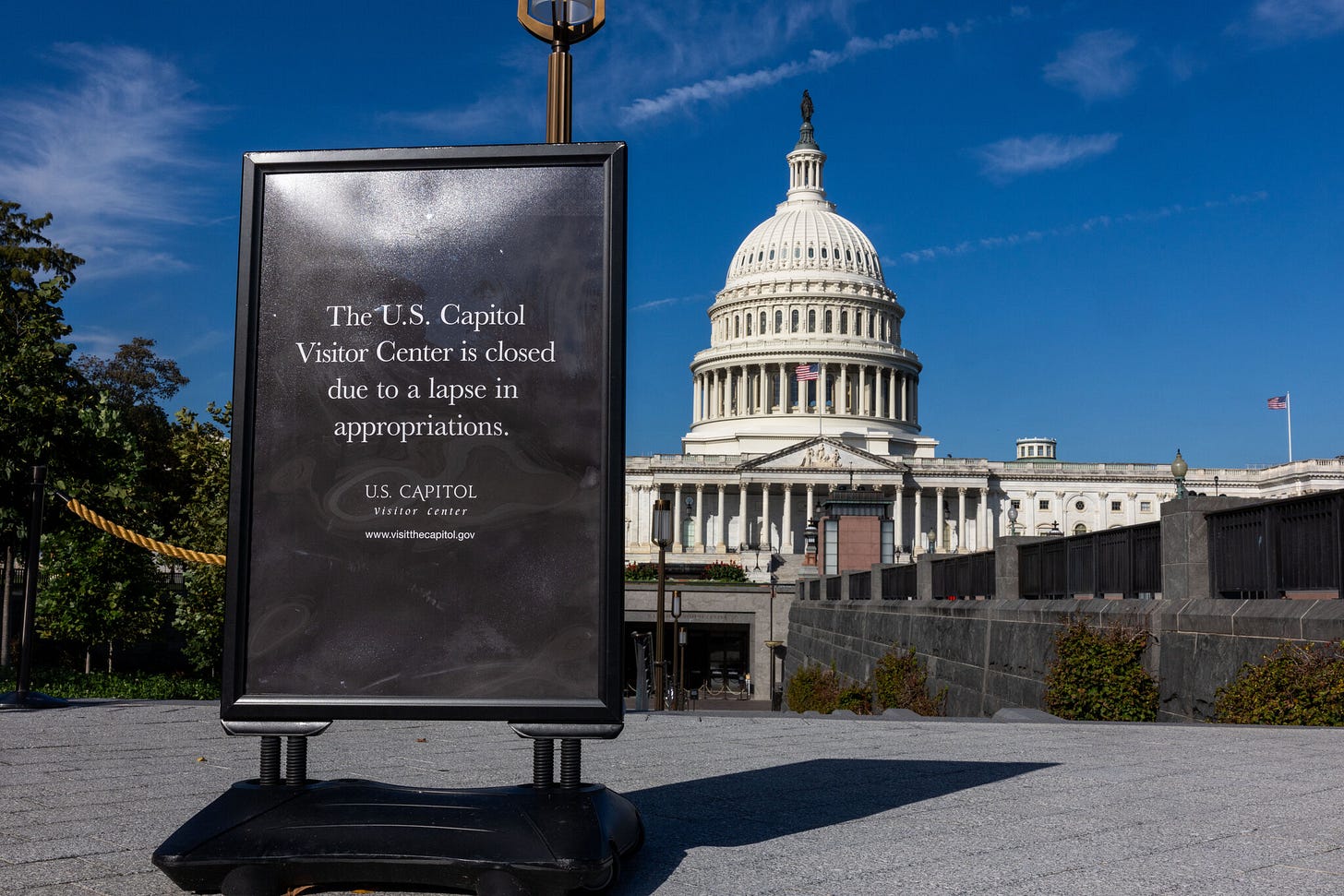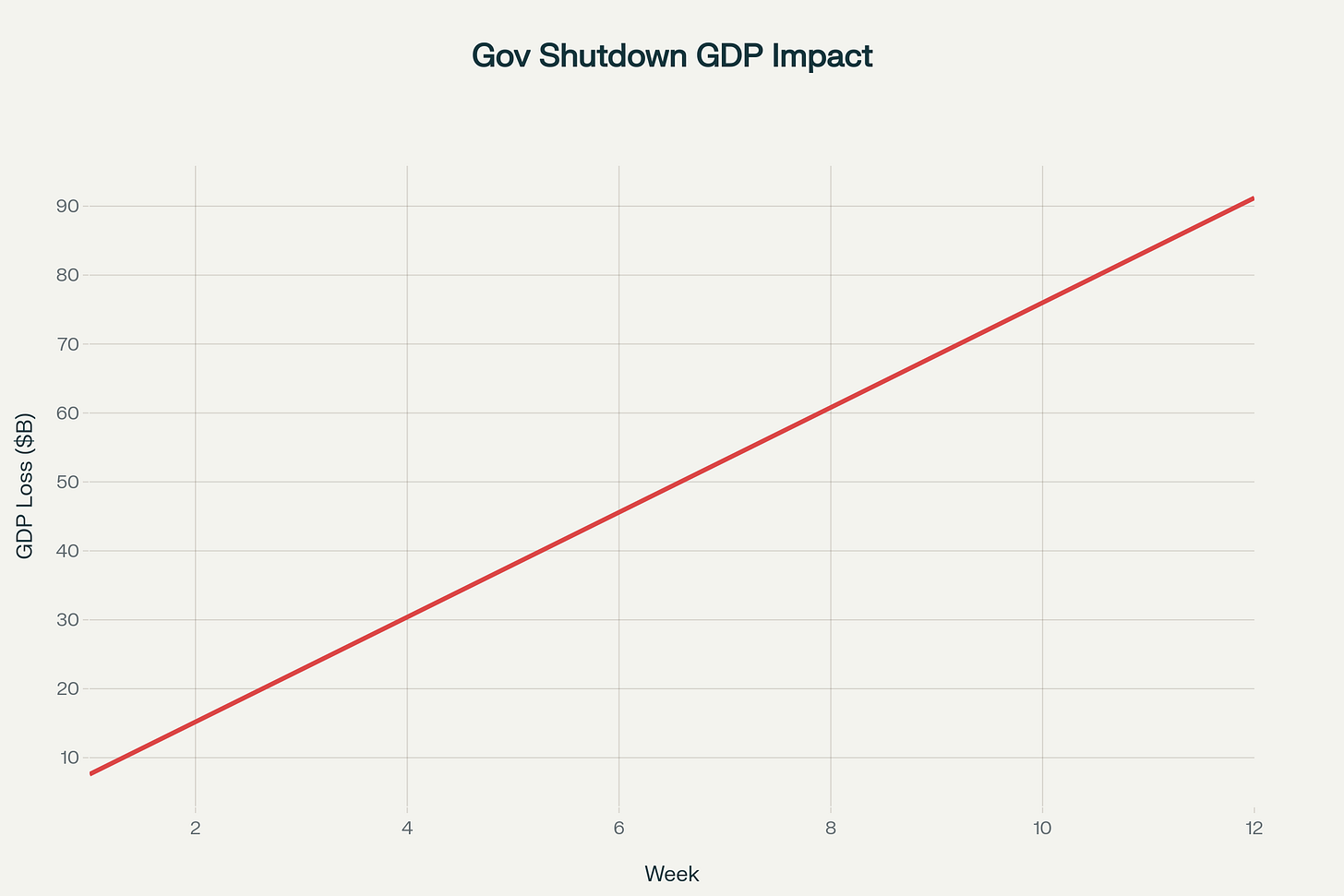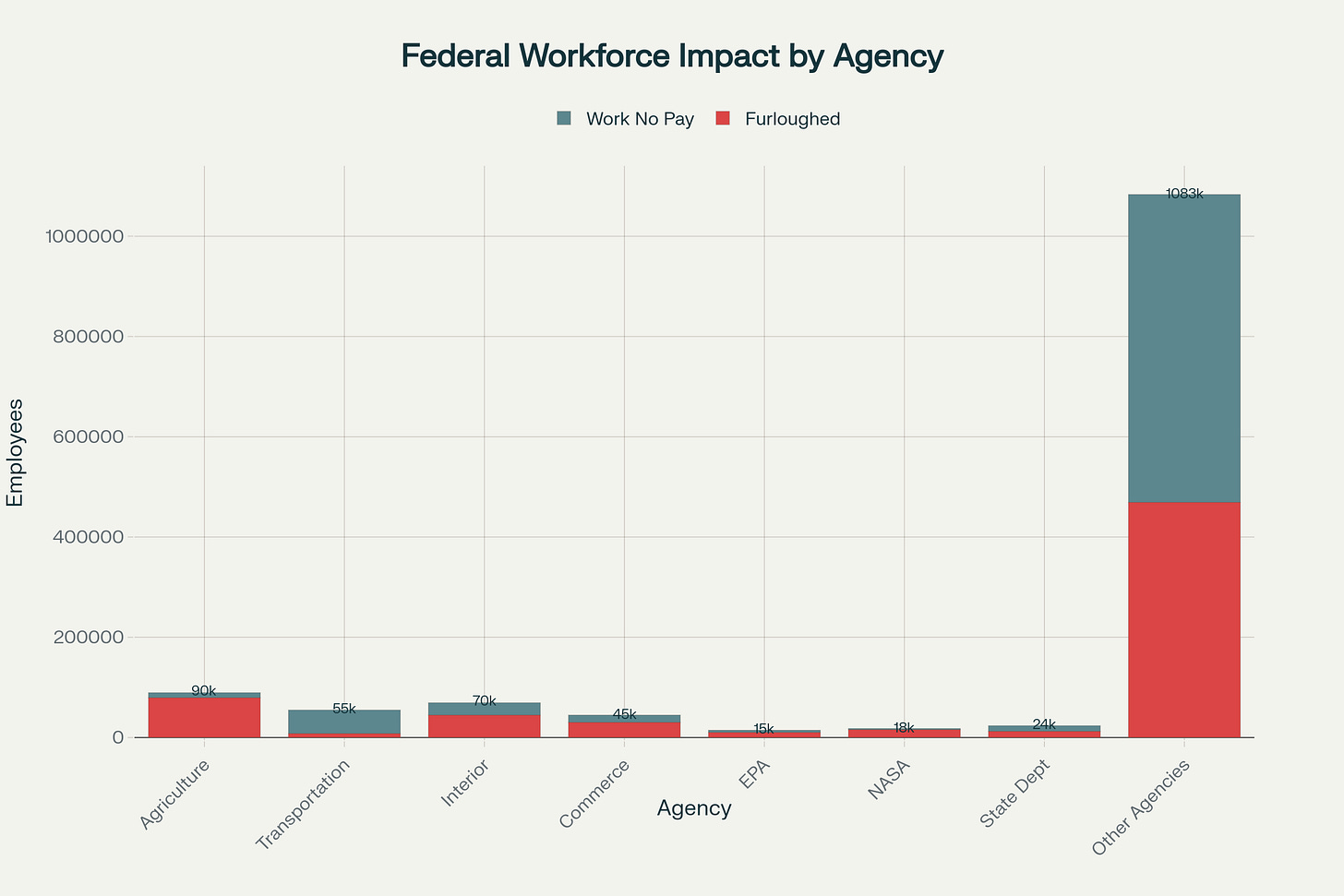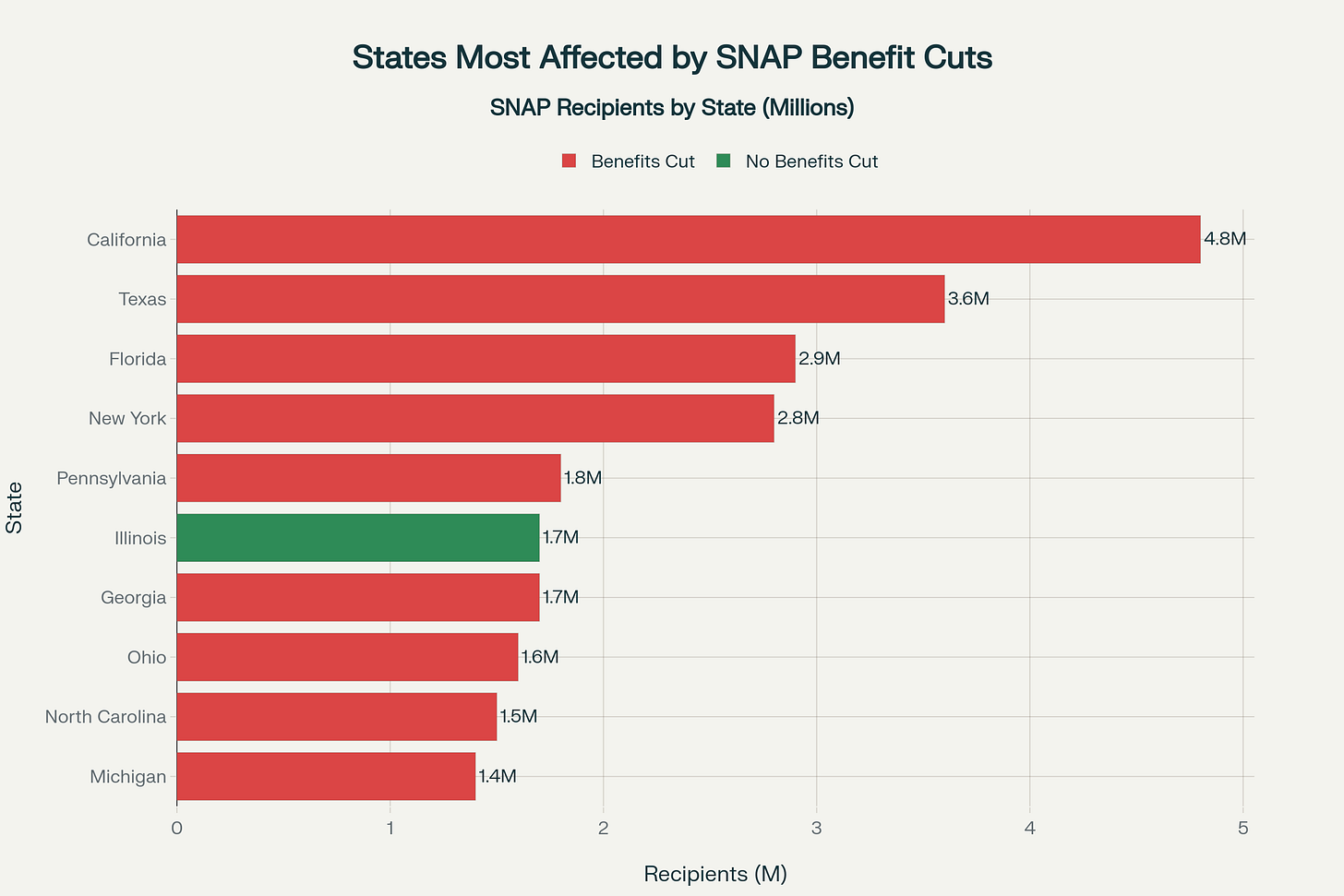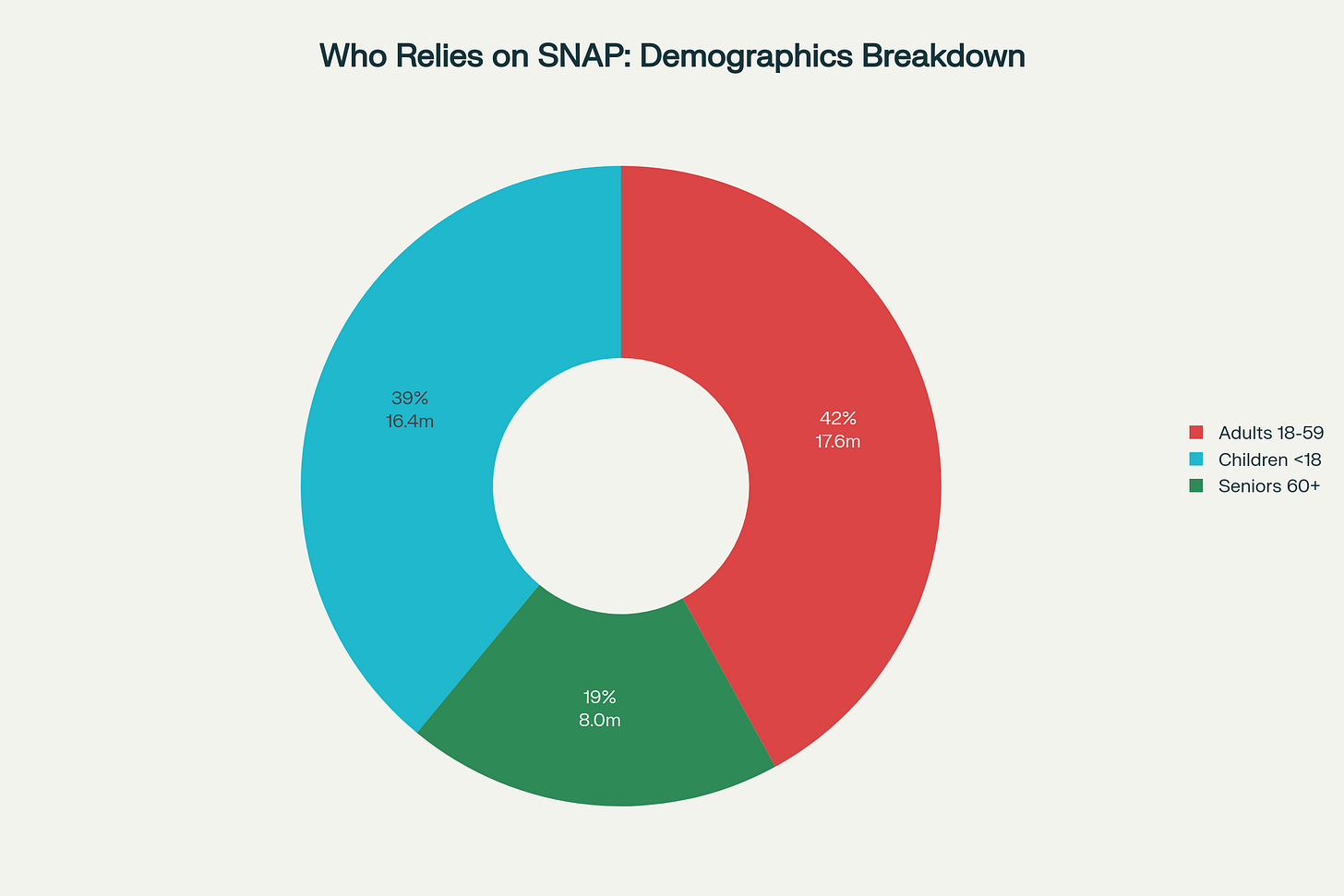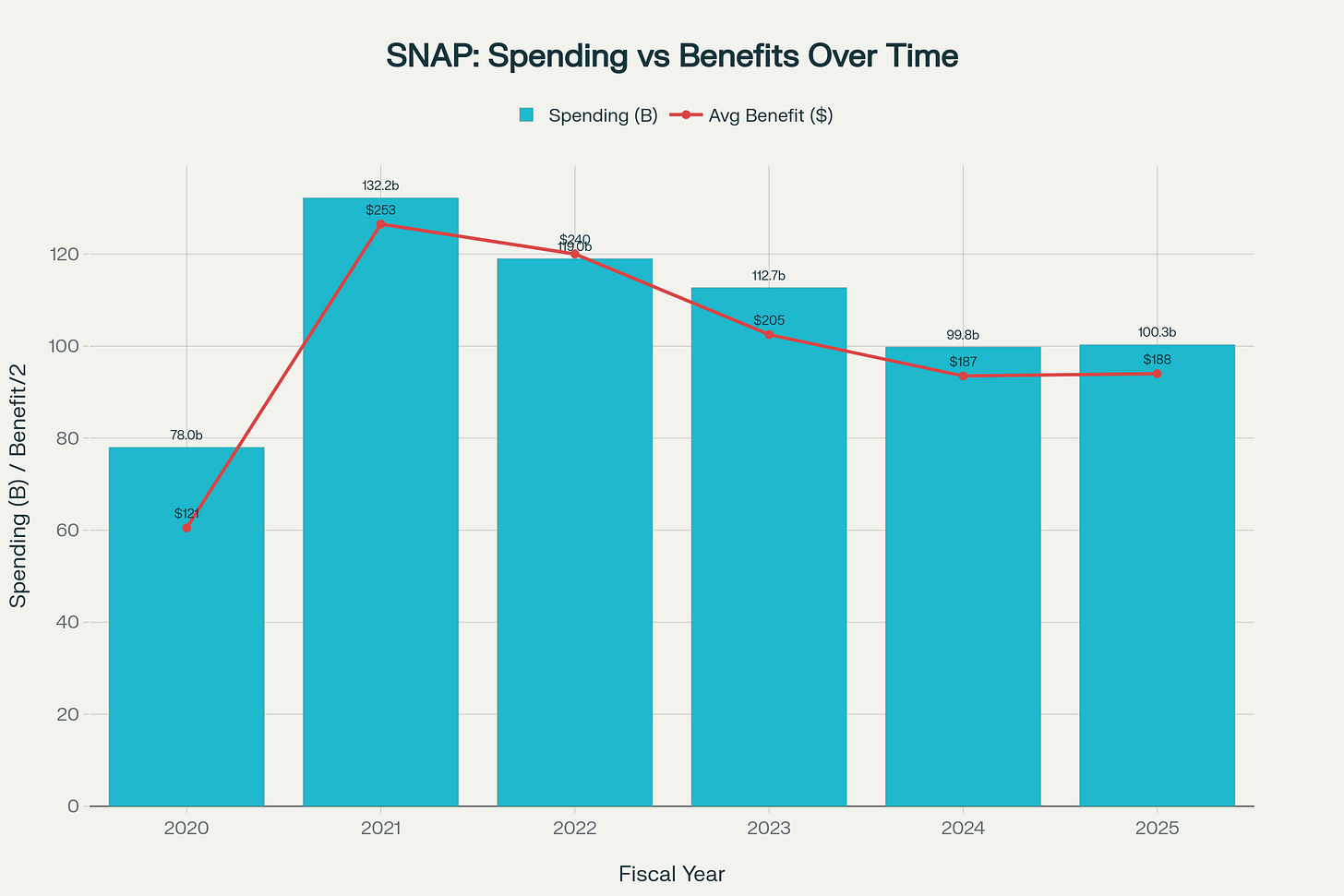The Coming Hunger Crisis
How America’s Shutdown Could Reshape Food Security for a Generation?
As 42 million Americans face benefit cuts on November 1, the economic ripple effects may extend far beyond the immediate crisis
The second-longest government shutdown in American history is about to trigger the largest disruption to the nation’s food assistance infrastructure in modern times. Starting November 1, 2025—just five days from now—approximately 42 million Americans will lose access to their Supplemental Nutrition Assistance Program (SNAP) benefits as federal funding runs dry. This isn’t merely a temporary inconvenience. Our comprehensive analysis of economic data, federal spending patterns, and historical precedents suggests this moment marks an inflection point that could reshape food security, economic growth, and social stability for years to come.
The Immediate Crisis: $8.3 Billion Per Month at Stake
The math is unforgiving. SNAP costs approximately $8.3 billion per month to operate, providing an average of $187.20 per person in monthly benefits. The USDA’s contingency fund contains only $5 billion—leaving a $3.3 billion shortfall for November alone if the shutdown continues. On Friday, October 24, the Trump administration announced it would not tap into these emergency reserves, effectively guaranteeing a complete halt to benefits starting November 1.
Twenty-five states have already issued notices to recipients that their benefits will cease. California, Texas, Florida, New York, and Pennsylvania—home to 16.9 million SNAP recipients combined—will all cut off aid simultaneously. The timing, just before Thanksgiving, adds cruel irony to the policy paralysis.
Who Will Go Hungry?
Children under 18 comprise 39% of SNAP recipients—roughly 16.4 million young Americans whose families will suddenly need to find alternative ways to feed them. Adults aged 18-59 represent 42% (17.6 million people), many working full-time but earning wages insufficient to cover both rent and groceries in an era of persistent inflation. Seniors over 60 account for the remaining 19%, or approximately 8 million elderly Americans on fixed incomes.
Perhaps most troubling: 73% of SNAP households have gross monthly incomes at or below the federal poverty line. These aren’t families with financial cushions or emergency savings. For many, SNAP represents the difference between eating and not eating.
The Economic Domino Effect
The immediate humanitarian crisis is clear, but the secondary economic effects may prove equally devastating and far more persistent. Government shutdowns don’t occur in a vacuum—they reverberate through the entire economy in ways that compound over time.
GDP: The Slow Bleed
Economic modeling from Goldman Sachs, JPMorgan, and Oxford Economics converges on a consistent estimate: each week of shutdown reduces annualized GDP growth by 0.1 to 0.2 percentage points. At day 27 of the current shutdown, we’re approaching a 0.6 percentage point reduction in Q4 2025 growth—representing approximately $30.4 billion in lost economic output.
But the relationship isn’t linear. The longer the shutdown persists, the more these losses compound. The 2018-2019 shutdown lasted 35 days and cost the economy an estimated $11 billion, with $3 billion permanently lost. The worst-case scenario for this shutdown is $91 billion lost.
The Federal Workforce: Beyond Missing Paychecks
Approximately 1.4 million federal employees are directly affected by the shutdown. About 670,000 furloughed, 730,000 working without pay. The Agriculture Department has been hardest hit with 89% furloughed.
Consumer Spending: The Confidence Crisis
Federal workers missing paychecks curtail discretionary spending. Consumer confidence has dropped, further reducing economic activity in Q4 2025.
Who Is Affected by SNAP Cuts?
The disruption threatens 42 million SNAP recipients nationwide. The largest states impacted include California, Texas, Florida, New York, and Pennsylvania.
Demographics of SNAP Recipients
Adults 18-59 make up 42% of recipients, children 39%, seniors 19%.
SNAP Spending Trends Over Time
Spending peaked during the pandemic at $132 billion in 2021 but has declined to about $100 billion in 2025, with average monthly benefits per person dropping as well.
Three Shutdown Scenarios: Economic Impact & Recovery Timeline
Economic and social outcomes depend heavily on how long the shutdown lasts.
A Preventable Catastrophe?
The coming hunger crisis is a policy choice, not a natural disaster. The federal government can fund SNAP with less than 0.03% of annual spending. Yet millions will face hunger imminently.
The economic, social, and human costs will be profound unless resolution arrives swiftly.



